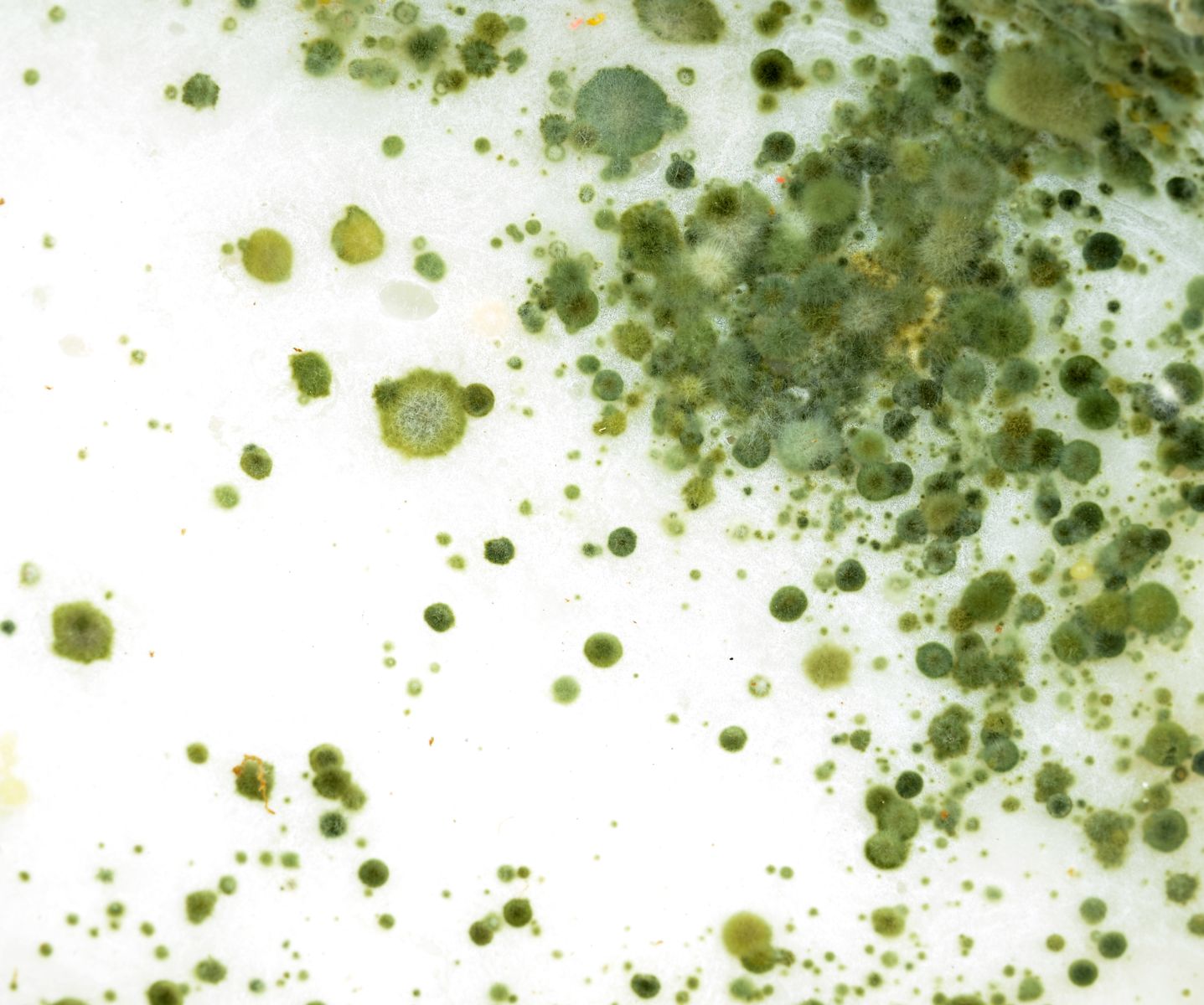What are Molds?
 Molds are microscopic fungi that live on plant or animal matter. They can be found indoors and outdoors and are part of our natural environment. They play an important role in the environment by breaking down and digesting organic material. Also called fungi or mildew, molds are neither plants nor animals; they are part of the kingdom Fungi.
Molds are microscopic fungi that live on plant or animal matter. They can be found indoors and outdoors and are part of our natural environment. They play an important role in the environment by breaking down and digesting organic material. Also called fungi or mildew, molds are neither plants nor animals; they are part of the kingdom Fungi.
Molds can multiply by producing microscopic spores similar to the seeds produced by plants. Many spores are so small they easily float through the air and can be carried for great distances by even the gentlest breezes.
Molds come in many colors including white. "Black mold" is not a species or specific kind of mold, and neither is "toxic mold." Sometimes the news media use the terms "toxic mold" and "black mold" to refer to molds that may produce mycotoxins or for a specific mold, Stachybotrys chartarum. Molds that produce mycotoxins are often referred to as toxigenic fungi.
Mold is not usually a problem indoors -- unless mold spores land on a wet or damp spot and begin growing. As molds grow they digest whatever they are growing on. Unchecked mold growth can damage buildings and furnishings; molds can rot wood, damage drywall, and eventually cause structural damage to buildings. Mold can cause cosmetic damage, such as stains, to furnishings. The potential human health effects of mold are also a concern. It is important, therefore, to prevent mold from growing indoors.
The Health Effects of Mold
People who are sensitive to mold may experience stuffy nose, irritated eyes, wheezing, or skin irritation. People allergic to mold may have difficulty in breathing and shortness of breath. People with weakened immune systems and with chronic lung diseases, such as obstructive lung disease, may develop mold infections in their lungs. If you or your family members have health problems after exposure to mold, contact your doctor or other health care provider.
Preventing Mold
Clean up and dry out the building quickly (within 24 to 48 hours). Open doors and windows. Use fans to dry out the building. (Click on the following link for additional information on Reentering Your Flooded Home).
- When in doubt, take it out! Remove all porous items that have been wet for more than 48 hours and that cannot be thoroughly cleaned and dried. These items can remain a source of mold growth and should be removed from the home. Porous, non-cleanable items include carpeting and carpet padding, upholstery, wallpaper, drywall, floor and ceiling tiles, insulation material, some clothing, leather, paper, wood, and food. Removal and cleaning are important because even dead mold may cause allergic reactions in some people.
- To prevent mold growth, clean wet items and surfaces with detergent and water.
- Homeowners may want to temporarily store items outside of the home until insurance claims can be filed. See recommendations by the Federal Emergency Management Agency (FEMA).
- If you wish to disinfect, you can refer to the U.S. Environmental Protection Agency's document, A Brief Guide to Mold and Moisture in Your Home.
What to do if you have Mold
If there is mold growth in your home, you should clean up the mold and fix any water problem, such as leaks in roofs, walls, or plumbing. Controlling moisture in your home is the most critical factor for preventing mold growth.
To remove mold growth from hard surfaces use commercial products, soap and water, or a bleach solution of no more than 1 cup of bleach in 1 gallon of water. Use a stiff brush on rough surface materials such as concrete.
If you choose to use bleach to remove mold:
- Never mix bleach with ammonia or other household cleaners. Mixing bleach with ammonia or other cleaning products will produce dangerous, toxic fumes
- Open windows and doors to provide fresh air.
- Wear non-porous gloves and protective eye wear.
- If the area to be cleaned is more than 10 square feet, you should consult the U.S. Environmental Protection Agency (EPA) guide titled Mold Remediation in Schools and Commercial Buildings . Although focused on schools and commercial buildings, this document also applies to other building types. You can also get it free by calling the EPA Indoor Air Quality Information Clearinghouse at (800) 438-4318, or by going to the EPA web site http://www.epa.gov/mold/mold_remediation.html.
- Always follow the manufacturer's instructions when using bleach or any other cleaning product.
- More information on personal safety while cleaning up after a natural disaster is available at the CDC.
If you plan to be inside the building for a while or you plan to clean up mold, you should buy an N95 mask at your local home supply store and wear it while in the building. Make certain that you follow instructions on the package for fitting the mask tightly to your face. If you go back into the building for a short time and are not cleaning up mold, you do not need to wear an N95 mask.
Mold Resources
RESIDENTIAL:
Connecticut Department of Public Health Fact Sheet
Environmental Protection Agency’s Brief Guide to Mold, Moisture and Your Home
Center for Disease Control and Prevention: Reentering Your Flooded Home
Health Canada: Condominium Owner's Guide to Mold.pdf
Health Canada: Fighting Mold-The Homeowners' Guide.pdf
SCHOOLS AND COMMERCIAL BUILDINGS:
Connecticut School Indoor Environment Resource Team
New York City Health Dept’s Guidelines on Assessment and Remediation of Fungi in Indoor Environments
EPA’s Mold Remediation in Schools and Commercial Buildings
CONSULTANTS:
American Industrial Hygiene Association’s Paid List of Consultants (Search on Mold)
OTHER:
CT DPH Occupational Airways Publications (IEQ&Teachers)
OSHA’s Brief Guide to Mold in the Workplace